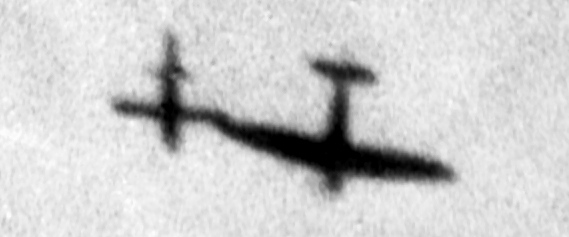

Posted on 07/29/2007 9:04:43 AM PDT by NormsRevenge
LONDON (Reuters) - Police closed streets near London's Canary Wharf financial district on Saturday after an unexploded German flying bomb from World War Two was found on a construction site.
Bomb disposal experts were called in to make the V1 missile safe after it was unearthed close to the east London complex that houses 80,000 office workers during the working week, police said. At weekends the area is busy with shoppers and visitors.
Police closed several roads around the site in Millharbour, a road in the former docklands.
"Ambulance, fire and police are there and the building site has been evacuated," a London police spokesman said. The area was cordoned off, he said.
Thousands of V1s, nicknamed "Doodlebugs," were fired at the capital during the war, with the docks a prime target.
Hundreds of unexploded bombs from the war are buried across the country, according to government figures. They are unearthed from time to time, often during building excavations.
Canary Wharf's tenants include Bank of America, Barclays, Citigroup, HSBC, the Independent newspaper group and Reuters.


Fiddlersgreen.net
http://www.fiddlersgreen.net/AC/aircraft/V1/V1.php
The German V1 flying bomb, or ‘buzz’ bomb, known originally as the Fieseler Fi 103, was the first of the Vergeltungswaffen “weapons of vengeance,” named in response to Allied air assaults on Germany during World War II. It emerged from proposals made in 1939 by the Argus Motorenwerke.
The first of Germany’s “V-weapons” to be unleashed, the V-1, also known as the Fieseler FI-103, was a small pilotless aircraft powered by a pulse jet engine and carrying a one-ton explosive warhead. Although prone to mechanical failure and vulnerable to fighters, barrage balloons, and anti-aircraft fire, the V-1 nevertheless caused great destruction to targets in England and Belgium. Troops and civilians subjected to these attacks nicknamed them “doodlebugs” or “buzz bombs”. The flying bomb concept can be seen today in the modern cruise missile.
So, were these things spray-and-pray, or was there some kind of a terminal guidance system?
V-1
V-2 was the ballistic missile
V-4 was intercontinental.
V-5 was the Saturn moon rocket.
Shucks, you hear every now and then about someone finding an unexploded cannon shell from the War of Northern Agression.
Minimally so, Ya pointed it in a direction, when it ran out of fuel, it dropped like a rock and detonated
Strictly point and pray. Unguided missles.
Yes. When it stopped buzzing it was coming down. If you heard it stop you wanted to find shelter right away.
FRom wiki
http://en.wikipedia.org/wiki/V-1_flying_bomb
it did have a gyro and also had a “timer” that when met, would cause it to plummet on the targeted area.
Guidance system
The V-1 guidance system used a simple autopilot to regulate height and speed. A weighted pendulum system provided fore-and-aft attitude measurement to control pitch (damped by a gyromagnetic compass, which it also stabilized). There was a more sophisticated interaction between yaw, roll, and other sensors: a gyromagnetic compass (set by swinging in a hangar before launch) gave feedback to control each of pitch and roll, but it was angled away from the horizontal so that controlling these degrees of freedom interacted: the gyroscope stayed trued up by feedback from the magnetic field, and from the fore and aft pendulum. This interaction meant that rudder control was enough without a separate banking mechanism.
A countdown timer driven by a propeller (actually a vane anemometer) on the nose found when target range has been reached, accurately enough for area bombing. Before launch the counter was set to a value that would reach zero upon arrival at the target in the prevailing wind conditions. As the missile flew, the airflow turned the propeller and every 30 rotations of the propeller counted down one number on the counter. This counter triggered the arming of the warhead after about 38 miles[3]. When the count reached zero, a solenoid attached to a small guillotine was activated, cutting the air hose from the servo to the rear elevator and allowing a spring to fully depress the elevator causing the V-1 to dive[4]. While this was originally intended to be a power dive, in practice the dive caused the fuel flow to cease, which stopped the engine. The sudden silence after the buzzing alerted listeners that the V-1 would impact soon.
With the counter determining how far the missile would fly; it was only necessary to launch the V1 with the ramp in the rough direction and the autopilot controlled the rest.
We used to have a ball bombing their launch sites.
They were highly accurate: They always hit the ground.
That's what Torchwood wants you to believe. :^)
They ran out of fuel and fell.
Doodlebug ping

A Spitfire Uses It Wing To 'Tip' A V-1

A nifty air maneuver.
sorry, couldn't find an Arte Johnson in uniform"
Disclaimer: Opinions posted on Free Republic are those of the individual posters and do not necessarily represent the opinion of Free Republic or its management. All materials posted herein are protected by copyright law and the exemption for fair use of copyrighted works.